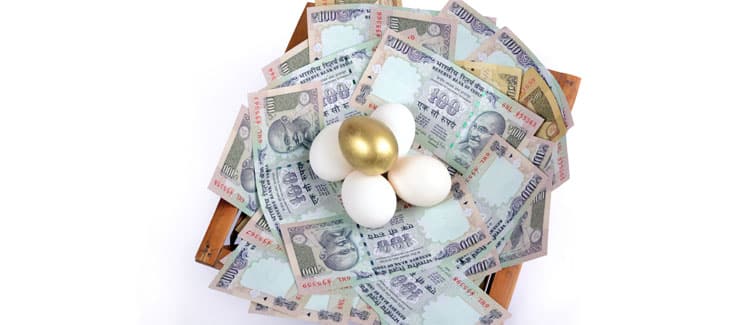Deductions in New Tax Regime under Union Budget 2025
In the Union Budget FY 2025-26 presentation in the Lok Sabha, Union Finance Minister Nirmala Sitharaman has announced significant changes to tax slabs and rates. A new structure has been introduced to substantially reduce taxes for the middle class, allowing more money in their hands. This will help boost household consumption, savings, and investment. A major highlight is the introduction of a 'nil tax' slab for income up to ₹12 lakh (₹12.75 lakh for salaried taxpayers with a standard deduction of ₹75,000).
This article will help you know some of the valid exemptions and deductions under the new tax regime.
What is the New Tax Regime for the Financial Year 2025-26 (AY 2026-27)?
The Union Government introduced a New Tax Regime under Section 115BAC in Budget 2020 with concessional tax slab rates.
The Union Budget 2025, presented in the Parliament Session on 01 February 2025, brought significant changes to the tax slabs under the new tax regime for the Financial Year (FY) 2025-26 and Assessment Year (AY) 2026-27. The government introduced the following key changes for FY 2025-26:
New Income Tax Slabs for FY 2025-26 (New Tax Regime)
| Income Range (₹) | Tax Rate (%) |
| 0 to 4,00,000 | Nil |
| 4,00,001 to 8,00,000 | 5% |
| 8,00,001 to 12,00,000 | 10% |
| 12,00,001 to 16,00,000 | 15% |
| 16,00,001 to 20,00,000 | 20% |
| 20,00,001 to 24,00,000 | 25% |
| Above 24,00,000 | 30% |
Income up to ₹4 lakh is tax-free, and the highest marginal rate is 30% on income exceeding ₹24 lakh
Standard Deduction and Default Regime
- The new tax regime is the default regime for tax withholding and calculation.
- Salaried taxpayers can claim a standard deduction of ₹75,000, increasing the practical tax-free threshold slightly for salaried employees.
- Taxpayers who prefer to avail exemptions and deductions of the old regime must explicitly opt for it.
Comparison with Previous Years (New Tax Regime)
| FY/ AY | Income Range (₹) | Tax Rate (%) | Rebate Limit (₹) |
| FY 2024-25 / AY 2025-26 | 0-3,00,000 | Nil | ₹7,00,000 |
| 3,00,001-7,00,000 | 5 | ||
| 7,00,001-10,00,000 | 10 | ||
| 10,00,001-12,00,000 | 15 | ||
| 12,00,001-15,00,000 | 20 | ||
| Above 15,00,000 | 30 | ||
| FY 2025-26 / AY 2026-27 | 0-4,00,000 | Nil | ₹12,00,000 |
| 4,00,001-8,00,000 | 5 | ||
| 8,00,001-12,00,000 | 10 | ||
| 12,00,001-16,00,000 | 15 | ||
| 16,00,001-20,00,000 | 20 | ||
| 20,00,001-24,00,000 | 25 | ||
| Above 24,00,000 | 30 |
-
Increase in Tax Rebate Limits in Budget 2025
The latest Union Budget for FY 2025-26 has raised the tax rebate limit to ₹12 lakh per annum. Previously, the Budget 2024 increased the tax rebate for income ranging from ₹5 lakh to ₹7 lakh under the new tax regime, as per Section 87A of the Income Tax Act, 1961. This move is aimed at providing greater relief to taxpayers.
Tax Rebate Limit Under Old Tax Regime for FY 2024-25 Tax Rebate Limit in New Tax Regime for FY 2024-25 Tax Rebate Limit in New Tax Regime for FY 2025-26 ₹5 lakhs ₹7 lakhs ₹12 lakhs Budget 2025: You are liable to pay no tax under the new tax regime, if claiming a standard tax deduction of Rs. 75,000 on an income limit of Rs. 12.75 lakhs.
-
Increase in Basic Tax Exemption Limit in 2025
The basic tax exemption limit of ₹2.5 lakhs under the old tax regime increased to ₹3 lakhs under the new tax regime in Budget 2024 and further increased to ₹4 lakhs in Union Budget 2025.
Age Categories Basic Tax Exemption Limit u/ Old Tax Regime for FY 2025-26 Basic Tax Exemption Limit u/ New Tax Regime for FY 2024-25 Basic Tax Exemption Limit u/ New Tax Regime for FY 2025-26 < 60 Years ₹2.5 lakhs ₹3 lakhs ₹4 lakhs 60 to <80 Years ₹3 lakhs 80 Years & Above ₹5 lakhs The latest exemption limit is applicable from 01 April 2023 and it continues in 2024 as well when opting for the new tax regime.
-
Section 80TTB Deductions - Standard Deductions in February 2025
There are no changes in the standard deduction amount in Budget 2025, as salaried individuals remain eligible to claim the benefit of standard deductions of Rs. 75,000. This change was declared for the new tax regime in the Union Budget of July 2024.
The standard deduction was ₹50,000 as per Union Budget 2023. You can avail of this benefit as Section 80TTB deduction under the Income Tax Act, 1961.
Union Budget 2025 Update: Family pensioners can claim the standard deductions of Rs. 25,000 under the new tax regime from ₹15,000 in 2023.
-
Lower Surcharge Rates on High-Income Individuals in 2025
Individuals earning Rs. 50 lakhs & above fall in the high-income category. The government of India levies a surcharge on high-income earners.
Income Slabs Surcharge Rates in Old Tax Regime Surcharge Rates in New Tax Regime (in % p.a.) Rs. 50 lakhs NIL NIL Rs. 50 lakhs- Rs. 1 crores 10% 10% Rs. 1 crores- Rs. 2 crores 15% 15% Rs. 2 crores- Rs. 5 crores 25% 25% Rs. 5 crores & above 37% 25% -
New Tax Regime is the Default Option in 2025
The new tax regime is the default choice for an income tax deduction by an employer and the Income Tax Department.
Note: You have to specifically opt (with your employer or IT department) to calculate your TDS and other personal taxes as per the new tax regime.
Meaning of Exemptions and Deductions in New Tax Regime
Let us understand the key terms from the list mentioned below:
-
Deductions in New Tax Regime
- Refers to the expenses or investments made by the taxpayer that can be subtracted from their gross total income to arrive at the taxable income
- Deductions can help lower the tax liability of an individual or a company
-
Exemptions in New Tax Regime
- Refers to the income or investments made by the taxpayer that are not included in the calculation of their taxable income
Exemptions and Deductions Not Available Under New Tax Regime in 2025
From the table below, let us learn the key exemptions and deductions in the new tax regime that are not claimable by individuals:
| Non-Claimable Tax Deductions & Exemptions in New Tax Regime |
|
Provision of Exemptions and Deductions in New Tax Regime
There are certain deductions and exemptions in the new tax regime, which are as follows:
| New Tax Regime Exemption List |
|
Deductions on Business Income Not Provided Under New Tax Regime in 2025
Let us have a look at the various exemptions and deductions in the new tax regime not available to businesses:
| Exemptions/ Deduction Not Claimable by Businesses in the New Tax Regime |
|
Comparison of Deductions under Old Regime vs. New Regime for FY 2024-25
The table below shows a comparative analysis of the available deductions under the old vs. new tax regime:
| Available Exemptions/ Deductions | Old Tax Regime | New Tax Regime |
| Standard Deductions u/ Section 80TTB Deduction | YES
Deductions of Rs. 50,000 |
YES
Deductions of Rs. 75,000 |
| Employment/ Professional Tax u/ Sec 10(5) | YES | NO |
| House Rent Allowance (HRA) u/ Sec 10(13A) | YES | NO |
| Exemptions for Free Food & Beverages through Vouchers/ Food Coupons | YES | NO |
| Deductions of Up to Rs. 1.5 lakhs u/ Chapter VIA towards investments like u/ Sec 80C, 80CCC, 80CCD, 80DD, 80DDB, 80E, 80EE, 80EEA, 80G, etc. | YES | NO |
| Deductions u/ Sec 80CCD(2) for Employer's Contribution to Employee NPS Accounts | YES | YES |
| Deductions u/Sec 80CCD(1B) of Up to Rs. 50,000 | YES | NO |
| Medical Insurance Premium u/Sec 80D | YES | NO |
| Interest on Home Loan for Self-Occupied/ Vacant Property | YES | NO |
Salary Wise Calculation and Savings Under New Tax Regime
| Annual Salary | Tax Payable (Old Regime) | Tax Payable (New Regime) | Difference / Savings |
| ₹5,00,000 | ₹0* | ₹0* | — |
| ₹7,00,000 | ₹44,200 | ₹0* | ₹44,200 |
| ₹10,00,000 | ₹1,06,600 | ₹0* | ₹1,06,600 |
| ₹12,00,000 | ₹1,63,800 | ₹0* | ₹1,63,800 |
| ₹15,00,000 | ₹2,57,400 | ₹97,500 | ₹1,59,900 |
| ₹18,00,000 | ₹3,51,000 | ₹1,05,800 | ₹2,00,200 |
| ₹20,00,000 | ₹4,13,400 | ₹1,92,400 | ₹2,21,000 |
| ₹24,00,000 | ₹5,38,200 | ₹2,92,500 | ₹2,45,700 |
| ₹26,00,000 | ₹6,00,600 | ₹3,51,000 | ₹2,49,600 |
*Rebate under Section 87A applies, so no tax is payable up to ₹12 lakh under the new regime.
No major tax is payable under the new regime up to ₹12 lakh (after standard deduction), thanks to the higher rebate under 87A of the Income Tax Act.
Which Tax Regime Is Better - New Tax Regime vs Old Regime?
- Choose the Old Regime if you have large deductions/exemptions (HRA, 80C, 80D, home loan interest, etc.) that significantly lower your net taxable income.
- Choose the New Regime if:
- You want simplicity (no documentation).
- Your total deductions are small (typically under ₹2-3 lakh/yr).
- Your gross salary is up to ₹12.75 lakh (as income up to ₹12.75 lakh is tax-free for salaried with the standard deduction).
Quick Summary Table:
| If… | Better Regime |
| No/little tax-saving investments | New Regime |
| Many deductions & exemptions | Old Regime |
| Salary up to ₹12.75 lakh | New Regime |
| Salary above ₹15 lakh | Compare both! |
Use an official online income tax calculator to compare both regimes based on your deductions and income before filing
Wrapping It Up
The new tax regime offers taxpayers the option to choose between lower tax rates and limited deductions or higher tax rates and multiple deductions and exemptions as per the Union Budget 2025. It is important for taxpayers to carefully evaluate their deductions in both these tax regimes. Choose the one that best suits your financial goals and circumstances.
New Tax Regime Deductions – FAQs
-
How can I save taxes in the new tax regime in 2025?
- Claim the standard deduction (₹50,000; may be ₹75,000 if notified).
- Get deduction for employer's NPS contribution (Section 80CCD(2)).
- Claim deduction for Agniveer Corpus Fund (Section 80CCH, if applicable).
- Use family pension standard deduction.
- Limited other exemptions: travel/conveyance for official work, gratuity, VRS, and small employer gifts.
-
What are the rebates in the new tax regime in 2025?
- You get a rebate up to ₹60,000 under Section 87A if your taxable income is up to ₹12 lakh.
- This means if your income (after standard deduction) does not exceed ₹12 lakh, you pay zero income tax.
- Marginal relief applies for incomes just over ₹12 lakh
˜The insurers/plans mentioned are arranged in order of highest to lowest first year premium (sum of individual single premium and individual non-single premium) offered by Policybazaar’s insurer partners offering life insurance investment plans on our platform, as per ‘first year premium of life insurers as at 31.03.2025 report’ published by IRDAI. Policybazaar does not endorse, rate or recommend any particular insurer or insurance product offered by any insurer. For complete list of insurers in India refer to the IRDAI website www.irdai.gov.in
*All savings are provided by the insurer as per the IRDAI approved insurance plan.
^The tax benefits under Section 80C allow a deduction of up to ₹1.5 lakhs from the taxable income per year and 10(10D) tax benefits are for investments made up to ₹2.5 Lakhs/ year for policies bought after 1 Feb 2021. Tax benefits and savings are subject to changes in tax laws.
¶Long-term capital gains (LTCG) tax (12.5%) is exempted on annual premiums up to 2.5 lacs.
++Source - Google Review Rating available on:- http://bit.ly/3J20bXZ


- SIP Calculator
- Income Tax Calculator
- Compound Interest Calculator
- NPS Calculator
- Show More Calculator
Income Tax articles
Explore the popular searches and stay informed
- LIC
- Investment Plan
- Annuity Plan
- Child Plan
- Pension Plan
- ULIP Plan
- Child Investment Plan
- SIP
- SIP Calculator
- SBI SIP
- ULIP Calculator
- Sukanya Samriddhi Yojana
- Best SIP Plans
- Retirement Planning
- SBI SIP Calculator
- HDFC SIP Calculator
- Sukanya Samriddhi Yojana Interest Rate
- NPS Interest Rate
- Deferred Annuity Plans
- SBI Annuity Deposit Scheme Calculator
- Immediate Annuity Plans
- Post Office Child Plan
- Prime Minister Schemes For Boy Child
- Government Schemes for Girl Child
- 50k Pension Per Month
- Atal Pension Yojana Calculator
- Best Pension Plan in India
- CIBIL Score
- 1 Crore Term Insurance
- Best Term Insurance Plan
- Term Insurance for Women
- Term Insurance for NRI
- Term Insurance
- Term Insurance Calculator
- Life Insurance
- Term Insurance with Return of Premium
- Whole Life Insurance
- Term Insurance vs Life Insurance
- What is Term Insurance
- Life Insurance Calculator
- 5 Crore Term Insurance
- 2 Crore Term Insurance
- 50 Lakh Term Insurance
- Term Insurance for Housewife
- Benefits of Term Insurance
- Term Insurance Terminology
- Medical Tests for Term Insurance
- Term Insurance for Self Employed
- Claim Settlement Ratio
- 10 Crore Term Insurance
- Term Insurance for Smokers
- 1.5 Crore Term Insurance
- Zero Cost Term Insurance
- FIRE Calculator















